Results 7,161 to 7,170 of 12096
Thread: Anandtech News
-
07-15-17, 10:13 AM #7161
Anandtech: ASUS Adds Entry-Level VP28UQG to Gaming LCD Lineup: 28”, 4K, FreeSync, 1ms
Without making any formal announcements, Asus has quietly added a new gaming display to their product lineup. The VP28UQG features a 4K resolution, a 1 ms response time, as well as AMD’s FreeSync dynamic refresh rate technology. The new monitor does not belong to the premium ROG product family and does not support high refresh rates, so all signs point to Asus positioning it as an entry-level monitor.
The ASUS VP28UQG display is equipped with a 28” TN panel featuring a 3840×2160 resolution, 300 nits brightness, a 1000:1 contrast ratio, 170°/160° viewing angles, a 1 ms response time, as well as a 60 Hz refresh rate. The monitor can reproduce 1.07 billion colors, but ASUS for some reason does not disclose its actual coverage of standard color spaces. Since the VP28UQG is designed for gaming, it is most likely tailored for Windows and therefore the sRGB color space.
Hardcore gamers might consider a 60 Hz refresh rate too low for action packed titles, but ASUS seems to aim the new monitor at casual gamers who have demands for a higher resolution and an above-average screen size. The three main reasons why ASUS calls the VP28UQG a gaming display is because it has a low response time from the use of a TN panel, supports AMD’s FreeSync technology (with a 40 to 60 Hz range, so unfortunately no LFC), as well as ASUS’s own GamePlus technology that adds on-screen crosshair, FPS counter, timer and so on. Keeping in mind that casual gamers barely have graphics cards that can hit above 60 frames per second in demanding titles at a 4K resolution, the 60 Hz refresh of the monitor might not be an issue for now. In fact, the VP28UQG is not the first 4Kp60 monitor aimed at gamers in ASUS’ lineup. The company has been selling the MG28UQ featuring a similar panel for a while now and the VP28UQG is positioned a bit lower in the lineup.
When it comes to connectivity, the VP28UQG is equipped with two HDMI 2.0 inputs as well as a DisplayPort 1.2 input, and has a 3.5-mm audio jack to connect headphones. As for ergonomics, ASUS says that the monitor can adjust its tilt, but not swivel or height.
All told, the ASUS VP28UQG seems to be aimed at gamers who want a large 4K panel with a fast response time and a dynamic refresh rate technology, but do not want to invest a lot in it and are okay with a 60 Hz TN panel. That said, do not expect the VP28UQG to be expensive. Its bigger brother called the MG28UQ is available for $429.99 at Amazon and the new unit will likely be even more affordable when it becomes available in Q3 2017.ASUS 4Kp60 Gaming Monitors ASUS
VP28UQGASUS
MG28UQPanel 28" TN Native Resolution 3840 × 2160 Refresh Rate Range 60 Hz Response Time 1 ms (gray-to-gray) Brightness 300 cd/m² 330 cd/m² Contrast 1000:1 unknown Viewing Angles 170°/160° horizontal/vertical Color Saturation sRGB (?) Inputs 2 × HDMI 2.0
1 × DisplayPort 1.21 × HDMI 1.4
1 × HDMI 2.0
1 × DisplayPort 1.2Audio 3.5-mm audio out 2 × 2 W speakers
3.5-mm audio outUSB Hub - dual-port USB 3.0 hub Proprietary Enhancements Trace Free Technology
GamePlus Modes: Crosshair/Timer/Display Alignment
Low Blue Light: Yes
SPLENDID Video Preset Modes: 8 Modes
Skin-Tone Selection: 3 Modes
Color Temperature Selection: 4 ModesTrace Free Technology
GamePlus Modes: Crosshair/Timer/Display Alignment
Low Blue Light: Yes
GameVisual Modes: Scenery/Racing/Cinema/RTS/RPG/FPS/sRGB
Skin-Tone Selection: 3 Modes
Color Temperature Selection: 4 ModesMechanical Chassis Color Black Tilt -5° ~ +20° Swivel - -60° ~ +60° Pivot - 0° ~ +90° Height Adjustment - 0~150 mm VESA Wall Mounting 100 × 100 mm Power Consumption Idle ~0.5 W Active 60 W 62.9 W Price unknown ~$430 Detailed Information Link Link
Related Reading:
- ASUS Launches VG245Q 'Console' Gaming Monitor: 1080p with FreeSync, $200
- ASUS VA326H and VA326N-W: 31.5-Inch Curved 144 Hz FHD Displays for $399
- ASUS Demonstrates ROG Swift PG27UQ: 4K, 144 Hz, HDR, DCI-P3 and G-Sync
- ASUS ProArt PA32U Display: 4K, 1000 Nits Brightness, 95% DCI-P3, 85% Rec. 2020
- ASUS Unveils Three Strix Gaming Monitors: FreeSync & High Refresh Rates
More...
-
07-15-17, 12:38 PM #7162
Anandtech: Viking Ships UHC-Silo SSDs: 25 – 50 TB Capacity, Custom eMLC, SAS, $0.4 pe
Viking Technology has started shipping their new lineup of ultra high capacity (UHC) SSDs designed to replace 3.5” HDDs in capacity-demanding applications that can take advantage of flash memory. The Viking UHC-Silo drives use planar eMLC NAND memory in custom packaging with raw NAND capacities of 25 TB and 50 TB, and consequently are currently the highest capacity SSDs available on the market.
An increasing number of datacenters these days use both SSDs and HDDs, balancing the high performance of SSDs with HDDs' ability to store huge amounts of data relatively cheaply. Meanwhile, there is an emerging category of all-flash or hybrid storage systems that either do not use hard drives at all, or use HDDs mostly for things like “cold” archives. Such systems are rather energy efficient and offer high performance thanks to the heavy use of solid state storage.
Nevertheless, when it comes to bulk storage, their requirements are similar to the requirements of datacenters using HDDs: maximum capacity per cubic meter, maximum capacity per watt, high availability, and predictable cost per GB. Viking’s UHC-Silo SSDs were designed for the aforementioned kinds of applications — in some cases, they are going to replace hard drives for huge databases or even “cold” storage, in other cases they are going to sit between “warm” and “cold” storage. Given that many applications may benefit from SSDs, demand for high-capacity flash storage devices is growing in general.
The Viking UHC-Silo SSDs come in a 3.5” form-factor (a rarity for any kind of SSD) and utilize a SAS 6 Gbps interface, two features that make the drives particularly well-suited for replacing high capacity HDDs. The drives are designed for mixed workloads that do not generate more than 1 DPWD and do not require very high performance. The UHC-Silo SSDs offer sustained sequential read/write speed of 500/350 MB/s as well as up to 60,000/15,000 random read/write IOPS, which is in line with other extreme capacity SATA SSDs and is a result of their internal architecture and limitations of contemporary controllers. In fact, given the UHC-Silo's performance limitations (350 MB/s sustained write speed), it's impossible to write more than 30 TB of data in a single day. So while the 25 GB version can physically support 1 DPWD over five years (this is what Viking guarantees), the 50 TB model cannot physically support more than 0.6 DPWD. The latter fact essentially means that, assuming Viking's sustained performance figures are reasonably accurate, the TBW rating of the 50 TB SKU (91.25 PB) cannot be physically exceeded during the warranty period.
[TABLE="width: 100%"]
[TR="class: tgrey"]
[TD="colspan: 4, align: center"]Viking UHC-Silo Specifications[/TD]
[/TR]
[TR="class: tlblue"]
[TD="colspan: 2"] [/TD]
[TD="colspan: 1"]25 TB[/TD]
[TD]50 TB[/TD]
[/TR]
[TR]
[TD="class: tlgrey, colspan: 2"]Form Factor[/TD]
[TD="colspan: 2, align: center"]3.5" SAS Drive[/TD]
[/TR]
[TR]
[TD="class: tlgrey, colspan: 2"]Interface[/TD]
[TD="colspan: 2, align: center"]SAS 6 Gbps[/TD]
[/TR]
[TR]
[TD="class: tlgrey, colspan: 2"]Controller[/TD]
[TD="colspan: 2, align: center"]Proprietary[/TD]
[/TR]
[TR]
[TD="class: tlgrey, colspan: 2"]NAND[/TD]
[TD="colspan: 2, align: center"]SK Hynix eMLC in proprietary packaging[/TD]
[/TR]
[TR]
[TD="class: tlgrey, colspan: 2"]Sequential Read[/TD]
[TD="colspan: 2, align: center"]500 MB/s[/TD]
[/TR]
[TR]
[TD="class: tlgrey, colspan: 2"]Sequential Write[/TD]
[TD="colspan: 2, align: center"]350 MB/s[/TD]
[/TR]
[TR]
[TD="class: tlgrey, colspan: 2"]Random Read (4 KB) IOPS[/TD]
[TD="colspan: 2, align: center"]60,000[/TD]
[/TR]
[TR]
[TD="class: tlgrey, colspan: 2"]Random Write (4 KB) IOPS[/TD]
[TD="colspan: 2, align: center"]10,000[/TD]
[/TR]
[TR]
[TD="class: tlgrey, colspan: 1"]Power[/TD]
[TD="class: tlgrey"]Idle[/TD]
[TD="colspan: 2, align: center"]10 W[/TD]
[/TR]
[TR]
[TD="class: tlgrey"]Operating[/TD]
[TD="colspan: 2, align: center"]16 W[/TD]
[/TR]
[TR]
[TD="class: tlgrey, colspan: 2"]ECC[/TD]
[TD="colspan: 2, align: center"]55 bit/512 byte BCH[/TD]
[/TR]
[TR]
[TD="class: tlgrey, colspan: 2"]Endurance[/TD]
[TD="colspan: 2, align: center"]Up to 1 DWPD for over five years (limited by performance)[/TD]
[/TR]
[TR]
[TD="class: tlgrey, colspan: 2"]Uncorrectable Bit Error Rate[/TD]
[TD="colspan: 2, align: center"]
-
07-17-17, 05:42 AM #7163
Anandtech: The Kingston HyperX Alloy Elite Mechanical Keyboard Review
A few months ago, Kingston made their move into the mechanical keyboards market with the Alloy FPS, a compact, portable mechanical keyboard. Today we are having a look at their second mechanical keyboard, the HyperX Alloy Elite, a product that is ditching the portability of the Alloy FPS for additional practical features and superior aesthetics.
More...
-
07-18-17, 10:45 AM #7164
Anandtech: The Asus Prime Z270-A & GIGABYTE Z270X-Ultra Gaming Motherboard Review
In this review we are having a look at two mainstream, Intel Z270 based gaming motherboards: the Asus Prime Z270-A and the GIGABYTE Z270X-Ultra Gaming. They look very similar on paper, with both retailing for the almost the same retail price and even using the same audio, LAN and USB chipsets, but each motherboard has its own strengths and weaknesses, which will examine in this review.
More...
-
07-18-17, 10:45 AM #7165
Anandtech: Gigabyte Announces H110-D3A Motherboard for Mining Rigs: The Mining Cart R
GIGABYTE this week has taken the wraps off of a new motherboard built specifically for the again popular cryptocurrency mining crowd: the H110-D3A. Like other boards targeted at mining, there are a plethora of PCIe x1 slots. Having several PCIe x1 slots on mining motherboards make it more cost effective to simply add more video cards into a single system, rather than expanding to additional systems. Despite this being a mining focused board, some more common features found in mainstream consumers boards are here, such as a Realtek ALC887 audio codec, although others are left out as well in an effort to reduce board prices for this cost-conscious and investment-oriented market.
Based on Intel's H110 chipset, the H110-D3A has five PCIe x1 slots from the PCH and a PCIe x16 slot from the CPU, giving a total of six slots for GPU mining. This is compared to a typical consumer motherboard board with three or four PCIe slots, so it is easy to see the value proposition for miners. Due to the socket/chipset combination, processor support is for both 6th and 7th generation Intel CPUs, while memory support is listed at DDR4-2133/2400 and 32GB for the two DIMM slots. It is pretty sparse on extra features, as are most boards aimed at mining, but it still offers a full PCIe 3.0 x4 M.2 slot and four SATA 6 Gbps ports.
The board is built using GIGABYTE's “Ultra Durable” components, which GIGABYTE states are tested for extended operation. Power is fed to the board and CPU via the usual 24-Pin ATX and 8-Pin EPS sockets, which in turn is regulated by a 5-phase VRM setup. Two additional power headers, via 4-Pin Molex plugs, are located above the first PCIe (x16) slot and below the last (x1) slot to handle the additional power required for running several video cards through the multiple PCIe slots.
Connectivity on the rear panel is basic, but all the required elements are there. This consists of two PS/2 ports, one parallel port, one serial port, a VGA port, two USB 3.0 ports, two USB2 ports, a Realtek Gbe LAN RJ-45 port, and Realtek ALC887 based audio.
Pricing is currently $89 at Newegg.com, though the board is not in stock at the time of writing. Compared to the Biostar TB250-BTC (see in the links below). the cost is a few dollars less with a similar number of PCIe slots available for mining duties. The competition seems to be heating up around the sub $100 segment for mining boards as more boards hit the market and board partners attempt to cash in on the mining craze.GIGABYTE H110-D3A Warranty Period 3 Years Product Page Link Price $89 Size ATX CPU Interface LGA1151 Chipset Intel H110 Memory Slots (DDR4) Two DDR4
Supporting 32GB
Quad Channel
Up to 2133/2400 MHzNetwork Connectivity Realtek GbE LAN chip Onboard Audio Realtek ALC887 PCIe Slots for Graphics (from CPU) 1 x PCIe 3.0 x16 PCIe Slots for Other 5 x PCIe 3.0 x1 Onboard SATA Four Onboard SATA Express None Onboard M.2 1 x SATA Onboard U.2 None USB 3.1 2 x Rear Panel USB 3.0 None USB 2.0 2 x Rear Panel Power Connectors 1 x 24-pin ATX
1 x 8-pin CPU,
2 x 4-pin MolexIO Panel 1 x PS/2 Mouse port
1 x PS/2 Keyboard port
1 x parallel port
1 x serial port
1 x D-Sub port
2 x USB 3.1 Gen 1 ports
2 x USB 2.0/1.1 ports
1 x RJ-45 port
3 x audio jacks (Line In, Line Out, Mic In)Form Factor/Size ATX Form Factor; 30.5cm x 19.0cm
Related Reading- Mining Cards Update: Zotac, Manli, and Biostar Products Formally Confirmed
- Biostar Goes Mining: New TB250-BTC Pro Motherboard and RX 470D Mining GPU
- ASUS & Sapphire Release Pascal & Polaris-based Cryptocurrency Mining Cards
More...
-
07-18-17, 08:47 PM #7166
Anandtech: Intel Releases Graphics Driver 15.46 for Windows
With last week’s release of Minecraft: Story Mode – Season Two, Intel has released their Graphics Driver 15.46 to provide launch support, as well as bugfixes, feature updates, Computer Vision and AI application development support, and support for Windows 10 Creator’s Update features. The driver is only for Windows 10 64-bit, and applies to Intel HD, Iris, and Iris Pro graphics on 6th and 7th generation processors (Skylake and Kaby Lake), Apollo Lake platforms, and Xeon E3-1200v5/E3-1500v5/E3-1200v6 product families.
Other than Minecraft: Story Mode, several other games have launch drivers or improvements included in 15.46 (Driver Version 15.46.02.4729, Windows Driver Store Version 22.20.16.4729): Fortnite, Gigantic, Pyre, Master x Master, Secret World Legends, and Pit People. Intel notes that all these optimizations only apply for processors with HD Graphics 620 or better.
In terms of key game bugs, Intel has corrected texture flickering in Halo 2 and other DX9 games. Intel has also resolved issues with graphical anomalies in Guilty Gear Xrd, Fallout 4, Euro Truck Simulator 2, Guild Wars 2, Deus Ex: Mankind Divided, Vikings – Wolves of Midgard, Rainbow Six Siege, For Honor, Watch Dogs 2, Lego Minifigures Online (DX12 mode), and other games. Finally, Intel has fixed intermittent crashes and hangs in Guild Wars 2, DOTA 2, and The Talos Principle (when resumed from suspend state in Vulkan mode), and others.
Other non-game related issues were resolved in 15.46 as well. The HD Graphics Control Panel no longer displays the Panel Self Refresh (PSR) option for non-PSR panels, and now does not have issues with bezel correction in tri-display collage configurations. Additionally, Intel has resolved an issue with graphical anomalies for certain tablets when the panel is rotated 180 degrees through hardware during fullscreen video playback. Lastly, Intel has fixed incorrect resolution caps during virtual display auto-detection, and has brought general WebGL stability improvements.
The 15.46 driver also brings support for CV and AI workload acceleration on Intel integrated GPUs. This support ties in with Intel’s open source Compute Library for Deep Neural Networks (clDNN) and associated Computer Vision SDK and Deep Learning Deployment Toolkits. As for the Creators Update, Intel simply states in the release notes that Windows 10 Creators Update features are enabled in 7th generation Intel Core processors.
Moving on, Intel has enabled additional OpenCL media extensions, as well as a few preview extensions. In addition, 15.46 brings support for OpenGL v4.5, Vulkan v1.0.38, and programmable sample positions in Direct3D12.
Although this graphics driver update is not the usual AMD or NVIDIA news, it is important to note that Intel remains very important in the consumer graphics space, despite the cancellation of Larrabee for discrete consumer graphics some seven years ago. As of Q1 2017, Intel iGPUs hold over 70% share of the graphics market. Since 2010, Intel has kept marching on, enhancing their integrated graphics prowess with Iris to the extent that Intel themselves now consider their iGPUs equivalent to discrete GPUs for mainstream and casual gamers. As iGPUs and APUs become more and more powerful, lower-end discrete graphics may be supplanted entirely.
Likewise, there is a machine learning element involved as well. In recent years, Intel has made a push towards deep learning in edge devices by utilizing their ubiquitous iGPUs, efforts of which are continuing in this very 15.46 driver. With Intel acquisitions like Nervana and Movidius, it was only a matter of time before the humble Intel IGP was hit with the AI and deep learning fever too. In that machine learning space, the competition is rapidly heating up with Google’s TPU, NVIDIA’s Tesla, and AMD’s Radeon Instinct among those in the mix, not to mention Intel’s own Knights Mill Xeon Phi and ARM’s own DynamIQ endeavors. As automotive, deep learning, and neural networking (as well as all the other related fields) applications grow, edge devices like Intel’s iGPUs can offer a method of democratization with respect to software development, and one to look out for in the future.
Wrapping things up, the updated drivers for Intel products are available on their driver download page. More information on 15.46 and further issues can be found in the release notes or on the 15.46 download page.
More...
-
07-19-17, 07:36 AM #7167
Anandtech: Samsung Increases Production Volumes of 8 GB HBM2 Chips Due to Growing Dem
Samsung on Tuesday announced that it is increasing production volumes of its 8 GB, 8-Hi HBM2 DRAM stacks due to growing demand. In the coming months the company’s 8 GB HBM2 chips will be used for several applications, including those for consumers, professionals, AI, as well as for parallel computing. Meanwhile, AMD’s Radeon Vega graphics cards for professionals and gamers will likely be the largest consumers of HBM2 in terms of volume. And while AMD is traditionally a SK Hynix customer, the timing of this announcement with AMD's launches certainly suggests that AMD is likely a Samsung customer this round as well.
Samsung’s 8 GB HBM Gen 2 memory KGSDs (known good stacked die) are based on eight 8-Gb DRAM devices in an 8-Hi stack configuration. The memory components are interconnected using TSVs and feature over 5,000 TSV interconnects each. Every KGSD has a 1024-bit bus and offers up to 2 Gbps data rate per pin, thus providing up to 256 GB/s of memory bandwidth per single 8-Hi stack. The company did not disclose power consumption and heat dissipation of its HBM memory components, but we have reached out Samsung for additional details.
Samsung began mass production of 4-Hi HBM2 KGSDs with 4 GB capacity and 2 Gbps data rate per pin in early 2016. These chips have been used to build various solutions based on NVIDIA’s GP100 and later GV100 GPUs aimed at HPC and similar applications. The company also started to manufacture HBM2 KGSDs with 8 GB capacity in 2016 and so far, Samsung is the only company to publicly announce that they can mass-produce 8 GB HBM2 KGSDs.
Recently AMD launched its Radeon Vega Frontier Edition cards, the first commercial products featuring Vega and 8-Hi HBM2 stacks. To date we haven't been able to get confirmation of whose HBM2 AMD is using – frequent collaborator SK Hynix's or Samsung’s – however as Samsung is for now the only vendor to announce 8-Hi volume production, it's looking increasingly likely that AMD is using Samsung's HBM2. Meanwhile in the coming months AMD will expand the lineup of its graphics cards based on the Vega GPU with the RX Vega line for gamers, and considering that such devices are sold in mass quantities, Samsung has a very good reason for increasing HBM2 production..
Samsung expects 8 GB HBM2 KGSDs to account for over 50% of its HBM2 production by the first half of 2018.
Gallery: Samsung Increases Production Volumes of 8 GB HBM2 Chips Due to Growing Demand




Related Reading:
- JEDEC Publishes HBM2 Specification as Samsung Begins Mass Production of Chips
- SK Hynix Advances Graphics DRAM: GDDR6 Added to Catalogue, GDDR5 Gets Faster
- Hot Chips 2016: Memory Vendors Discuss Ideas for Future Memory Tech - DDR5, Cheap HBM, & More
More...
-
07-19-17, 01:23 PM #7168
Anandtech: Kontron Merges with S&T, Gets Access to Software, Manufacturing
Kontron and S&T Deutschland Holding on Monday announced that shareholders of both companies have agreed to merge the two companies. Kontron, which is known for its servers, small form-factor PCs, and other specialized hardware, will retain its brand, but will gain access to S&T’s software and contract manufacturing capabilities. Meanwhile, S&T will broaden its hardware portfolio. Combined, sales of the two companies are expected to hit the $1 billion mark in 2017.
Kontron is one of the world’s largest makers of industrial rackmount servers and embedded systems, many of which are specialized and do not fall into traditional commodity categories. Last year was particularly tough for the company: its revenues decreased by 18% year-over-year to €385.1 million ($440 million), its gross margin dropped to 14.6% from 26.1% a year earlier, and its EBIT loss was €141.7 million ($161.7 million), reports LightReading. In the light of challenging financial situation, Kontron began talks with S&T regarding the merger late in 2016, which in turn concluded in June.
The merger with S&T will give Kontron access to S&T’s software as well as to Ennoconn, a subsidiary of Foxconn that designs and produces motherboards and systems for specialized and embedded applications. Outsourcing of manufacturing will naturally shrink costs for the new company, whereas the ability to offer software, hardware, and services will help the newly established entity to better address needs of its customers and sustain strong margins. In general, the consolidation of hardware and software is what has been driving the merger trend on the sever market for many years.
Kontron is one of a few suppliers of servers that have offered ARM-based servers. For example, at this year’s Mobile World Congress the company demonstrated the world’s first and only 1P server running Applied Micro/MACOM's X-Gene 3 processor with 32 custom ARMv8-A cores and 32 MB of cache. It will be interesting to see how the merger between Kontron and S&T affect the former’s ARM server plans.
The two companies hope that the merger, combined with internal restructuring of Kontron, will result in faster decision-making and shorten development times and evolutionary cycles. From a financial point of view, Kontron and S&T expect their combined revenues to be between €860 and €890 million ($993 – $1028 million) in fiscal year 2017, and intend to break the €1 billion ($1.155 billion) sales milestone in 2018.
More...
-
07-20-17, 07:56 AM #7169
Anandtech: EKWB Releases New RGB Monoblock for MSI X299 Motherboards
This week, the Slovenian based liquid cooling manufacturer, EKWB (EK Water Blocks) released a new monoblock which is custom made for specific MSI X299 motherboards, and named the EK-FB MSI X299 Gaming Pro Carbon RGB Monoblock. MSI claims this solution provides up to 30% cooler VRM and CPU temperatures as measured at the back of the PCB. It has a built-in 4-pin RGB LED strip compatible with MSI’s Mystic Light software in order to customize the lighting experience.
Based on the EK-Supremacy Evo cooling engine, EK states it has a high flow design and can be used in systems running a weaker pump. The EK-FB MSI X299 Gaming Pro Carbon Monoblock directly cools Intel LGA2066 socket CPUs as well as the potentially hot running VRM area on many X299 boards. It does so with direct contact on the both the CPU and MOSFETs with liquid flowing directly over those critical parts inside the block.
Sparing little expense, the base is made out of nickel-plated electrolytic copper, with the top constructed of acrylic glass. According to MSI, the cold plate portion of the block has been redesigned to ensure it “…has better mechanical contact with the IHS…thus enabling better thermal transfer”. An example of this is the raised circle where the CPU IHS would be pressed against (see picture below). The required barbs are the common G 1/4" type.
The included 4-pin RGB LED strip connects to the motherboard’s 4-pin RGB LED header, or to other 3rd party 4-pin LED controllers. The LED strip cover can be removed and replaced with another compatible RGB LED strip, or flipped around for better cable management, orientation, and aesthetics.
Though the name of this monoblock specifically mentions one specific motherboard, MSI says it is compatible with the following boards in their X299 lineup:
- MSI X299 Gaming Pro Carbon AC
- MSI X299 Gaming Pro Carbon
- MSI X299 Gaming M7 ACK
The EK-FB MSI X299 Gaming Pro Carbon RGB Monoblock is available for pre-order now through the EK Webshop and its Partner Reseller Network. Pricing, including VAT, will be 119.95€. EK says shipping of the pre orders will start on Thursday, July 27th.
Related Reading- EKWB Launches Aftermarket EK-M.2 Aluminium Heatsink for M.2 SSDs
- EKWB Announces Aluminum-based Fluid Gaming Serios Open Loop Liquid Coolers
More...
-
07-20-17, 10:26 AM #7170
Anandtech: Intel Launches Movidius Neural Compute Stick: Deep Learning and AI on a $7
Today Intel subsidiary Movidius is launching their Neural Compute Stick (NCS), a version of which was showcased earlier this year at CES 2017. The Movidius NCS adds to Intel’s deep learning and AI development portfolio, building off of Movidius’ April 2016 launch of the Fathom NCS and Intel’s later acquisition of Movidius itself in September 2016. As Intel states, the Movidius NCS is “the world’s first self-contained AI accelerator in a USB format,” and is designed to allow host devices to process deep neural networks natively – or in other words, at the edge. In turn, this provides developers and researchers with a low power and low cost method to develop and optimize various offline AI applications.
Movidius's NCS is powered by their Myriad 2 vision processing unit (VPU), and, according to the company, can reach over 100 GFLOPs of performance within an nominal 1W of power consumption. Under the hood, the Movidius NCS works by translating a standard, trained Caffe-based convolutional neural network (CNN) into an embedded neural network that then runs on the VPU. In production workloads, the NCS can be used as a discrete accelerator for speeding up or offloading neural network tasks. Otherwise for development workloads, the company offers several developer-centric features, including layer-by-layer neural networks metrics to allow developers to analyze and optimize performance and power, and validation scripts to allow developers to compare the output of the NCS against the original PC model in order to ensure the accuracy of the NCS's model.
The 2017 Movidius NCS vs. 2016 Fathom NCS
According to Gary Brown, VP of Marketing at Movidius, this ‘Acceleration mode’ is one of several features that differentiate the Movidius NCS from the Fathom NCS. The Movidius NCS also comes with a new "Multi-Stick mode" that allows multiple sticks in one host to work in conjunction in offloading work from the CPU. For multiple stick configurations, Movidius claims that they have confirmed linear performance increases up to 4 sticks in lab tests, and are currently validating 6 and 8 stick configurations. Importantly, the company believes that there is no theoretical maximum, and they expect that they can achieve similar linear behavior for more devices. Though ultimately scalability will depend at least somewhat with the neural network itself, and developers trying to use the feature will want to play around with it to determine how well they can reasonably scale.
Meanwhile, the on-chip memory has increased from 1 GB on the Fathom NCS to 4 GB LPDDR3 on the Movidius NCS, in order to facilitate larger and denser neural networks. And to cap it all off, Movidius has been able to reduce the MSRP to $79 – citing Intel’s "manufacturing and design expertise” – lowering the cost of entry even more.
Like other players in the edge inference market, Movidius is looking to promote and capitalize on the need for low-power but capable inference processors for stand-alone devices. That means targeting use cases where the latency of going to a server would be too great, a high-performance CPU too power hungry, or where privacy is a greater concern. In which case, the NCS and the underlying Myriad 2 VPU are Intel's primary products for device manufacturers and software developers.
As for the older Fathom NCS, the company notes that the Fathom NCS was only ever released in a private beta (which was free of charge). So the Movidius NCS is the de facto production version. For customers who did grab a Fathom NCS, Movidius says that Fathom developers will be able to retain their current hardware and software builds, but the company will be encouraging developers to switch over to the production-ready Movidius NCS.Movidius Neural Compute Stick Products Movidius Neural Compute Stick Fathom Neural Compute Stick Interface USB 3.0 Type A USB 3 On-chip Memory 4Gb LPDDR3 1Gb/512Mb LPDDR3 Deep Learning Framework Support Caffe Caffe
TensorFlowNative Precision Support FP16 FP16, 8bit Features Acceleration mode
Multi-Stick modeN/A Nominal Power Envelope 1W 1W SoC Myriad 2 VPU Myriad 2 VPU (MA2450) Launch Date 7/20/2017 4/28/2016 MSRP $79 $99
Stepping back, it’s clear that the Movidius NCS offers stronger and more versatile features beyond the functions described in the original Fathom announcement. As it stands, the Movidius NCS offers native FP16 precision, with over 10 inferences per second at FP16 precision on GoogleNet in single-inference mode, putting it in the same range as the 15 nominal inferences per second of the Fathom. While the Fathom NCS was backwards compatible with USB 1.1 and USB 2, it was noted that the decreased bandwidth reduced performance; presumably, this applies for the Movidius NCS as well.
SoC-wise, while the older Fathom NCS had a Myriad 2 MA2450 variant, a specific Myriad 2 model was not described for the Movidius NCS. A pre-acquisition 2016 VPU product brief outlines 4 Myriad 2 family SoCs to be built on a 28nm HPC process, with the MA2450 supporting 4Gb LPDDR3 while the MA2455 supports 4Gb LPDDR3 and secure boot. Intel’s own Myriad 2 VPU Fact Sheet confirms the 28nm HPC process, implying that the VPU remains fabbed with TSMC. Given that the 2014 Myriad 2 platform specified a TSMC 28nm HPM process, as well as a smaller 5mm x 5mm package configuration, it’s possible that a different, more refined 28nm VPU powers the Movidius NCS. In any case, it was mentioned that the 1W power envelope applies to the Myriad 2 VPU, and that in certain complex cases, the NCS may operate within a 2.5W power envelope.
Ecosystem Transition: From Google’s Project Tango to Movidius, an Intel Company
Close followers of Movidius and the Myriad SoC family may recall Movidius’ previous close ties with Google, having announced a partnership with Myriad 1 in 2014, culminating in the Myriad 1’s appearance in Project Tango. Further agreements in January 2016 saw Google sourcing Myriad processors and Movidius’ entire software development environment in return for Google contributions to Movidius’ neural network technology roadmap. In the same vein, the original Fathom NCS also supported Google’s TensorFlow, in contrast to the Movidius NCS, which is only launching with Caffe support.
As an Intel subsidiary, Movidius has unsurprisingly shifted into Intel’s greater deep learning and AI ecosystem. On that matter, Intel’s acquisition announcement explicitly linked Movidius with Intel RealSense (which also found its way into Project Tango) and computer vision endeavors; though explicit Movidius integration with RealSense is yet to be seen – or if in the works, made public. In the official Movidius NCS news brief, Intel does describe Movidius fitting into Intel’s portfolio as an inference device, while training and optimizing neural networks falls to the Nervana cloud and Intel's new Xeon Scalable processors respectively. To be clear, this doesn’t preclude Movidius NCS compatibility with other devices, and to that effect Mr. Brown commented: “If the network has been described in Caffe with the supported layer types, then we expect compatibility, but we also want to make clear that NCS is agnostic to how and where the network was trained.”
On a more concrete note, Movidius has a working demonstration of a Xeon/Nervana/Caffe/NCS workflow, where an end-to-end workflow of a Xeon-based training scheme generates a Caffe network optimized by Nervana’s Intel Caffe format, which is then deployed via NCS. Movidius plans to debut this demo at Computer Vision and Pattern Recognition (CVPR) conference in Honolulu, Hawaii later this week. In general, Movidius and Intel promise to have plenty to talk about in the future, where Mr. Brown comments: “We will have more to share about technical integrations later on, but we are actively pursuing the best end-to-end experience for training through to deployment of deep neural networks.”
Upcoming News and NCS Demos at CVPR
Alongside the Xeon/Caffe/Nervana/NCS workflow demo, Movidius has a slew of other things to showcase at CVPR 2017. Interestingly, Intel has described their presentations and demos as two separate Movidius and RealSense affairs, implying that the aforementioned Movidius/RealSense unification is still in the works.
For Movidius, Intel describes three demonstrations: “SDK Tools in Action,” “Multi-Stick Neural Network Scaling,” and “Multi-Stage Multi-Task Convolutional Neural Network (MTCNN).” The first revolves around the Movidius Neural Compute SDK and the platform API. The multi-stick demo showcases 4 Movidius NCS’ in accelerating object recognition. Finally, the third demo showcases Movidius NCS support for MTCNN, “a complex multi-stage neural network for facial recognition.” Meanwhile, Intel is introducing the RealSense D400 series, a depth-sensing camera family
The multi-stick demo is presumably what the company mentioned as a multi-stick demo that has been validated on three different host platforms: desktop CPU, laptop CPU, and a low-end SoC. The company also has a separate acceleration demo, where the Movidius NCS accelerates a Euclid developer module and offloads the CPUs, “freeing up the CPU for other tasks such as route planning or running application-level tasks.” The result is around double the framerate and a two-thirds power reduction.
All-in-all, Intel sees and outright states that they consider the Movidius NCS to be a means towards democratizing deep learning application development. As recent as this week, we’ve seen a similar approach as Intel’s recent 15.46 integrated graphics driver brought support for CV and AI workload acceleration on Intel integrated GPUs, tying in with Intel’s open source Compute Library for Deep Neural Networks (clDNN) and associated Computer Vision SDK and Deep Learning Deployment Toolkits. On a wider scale, Intel has already publicly positioned itself for deep learning in edge devices by way of their ubiquitous iGPUs, and Intel’s ambitions are highlighted by its recent history of machine learning and autonomous automotive oriented acquisitions: MobilEye, Movidius, Nervana, Yogitech, and Saffron.
As Intel pushes forward with machine learning development by way of edge devices, it will be very interesting to see how their burgeoning ecosystem coalesces. Like the original Fathom, the Movidius NCS is aimed at lowering the barriers to entry, and as the Fathom launch video supposes, a future where drones, surveillance cameras, robots, and any device can be made smart by “adding a visual cortex” that is the NCS.
With that said, however, technology is only half the challenge for Intel. Neural network inference at the edge is a popular subject for a number of tech companies, all of whom are jockeying for the lead position in what they consider a rapidly growing market. So while Intel has a strong hand with their technology, success here will mean that they need to be able to break into this new market in a convincing way, which is something they've struggled with in past SoC/mobile efforts. The fact that they already have a product stack via acquisitions may very well be the key factor here, since being late to the market has frequently been Intel's Achilles' heel in the past.
Wrapping things up, the Movidius NCS is now available for purchase for a MSRP of $79 through select distributors, as well as at CVPR.
More...
Thread Information
Users Browsing this Thread
There are currently 39 users browsing this thread. (0 members and 39 guests)




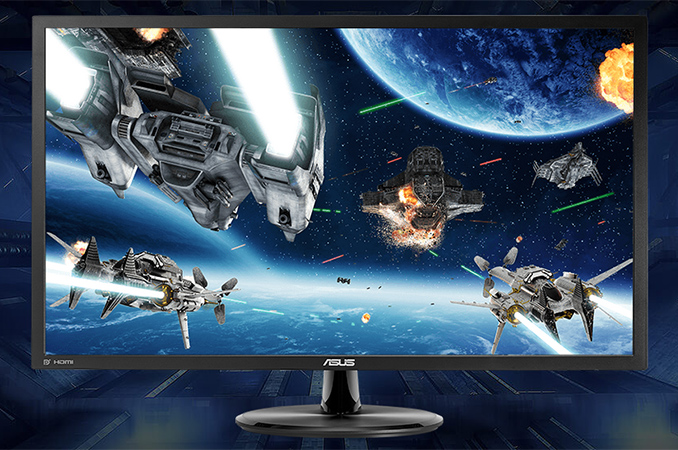


 Quote
Quote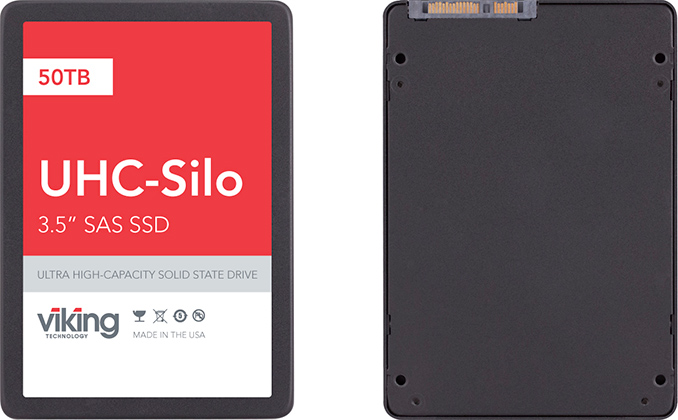
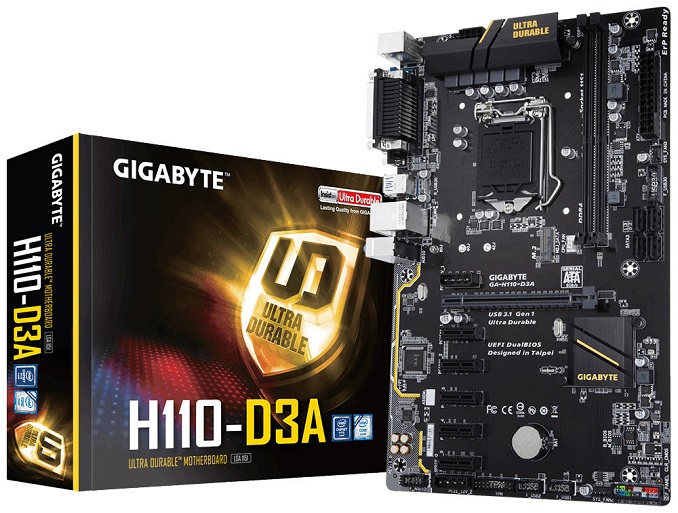
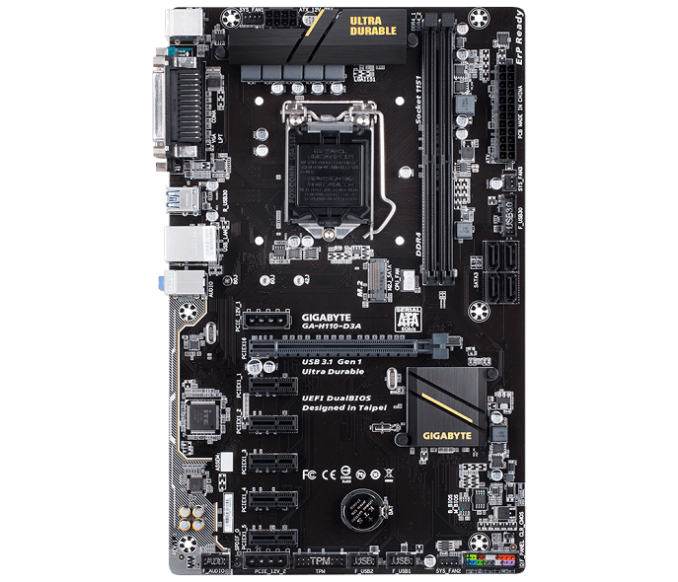
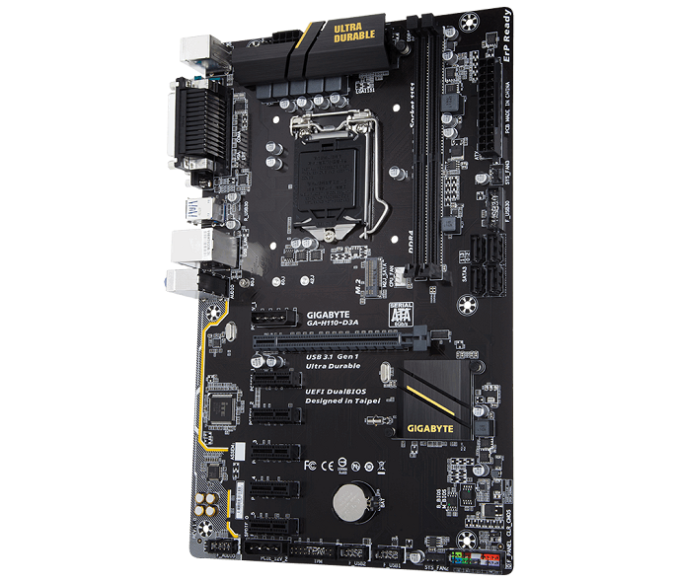
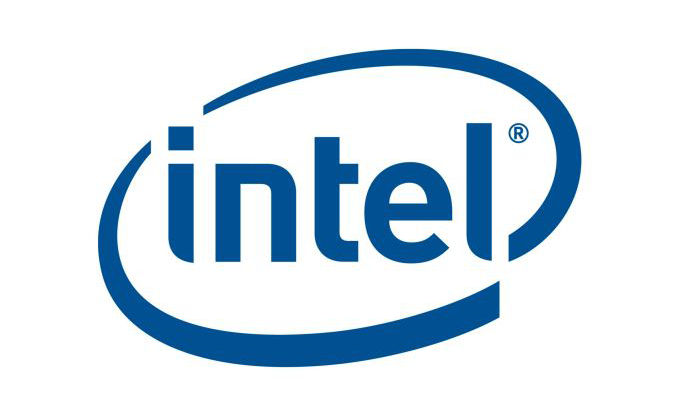






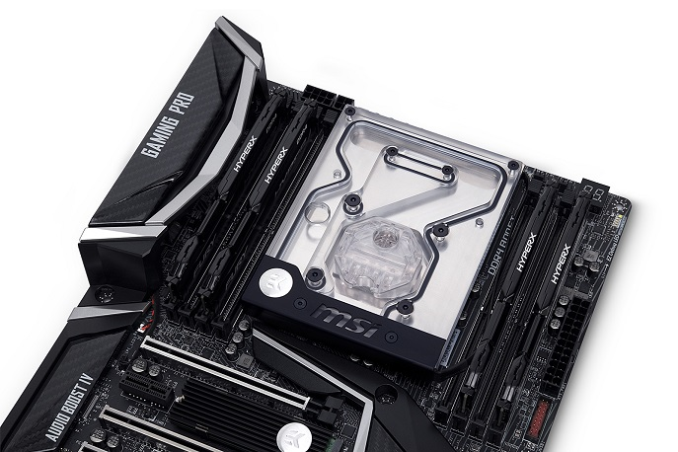
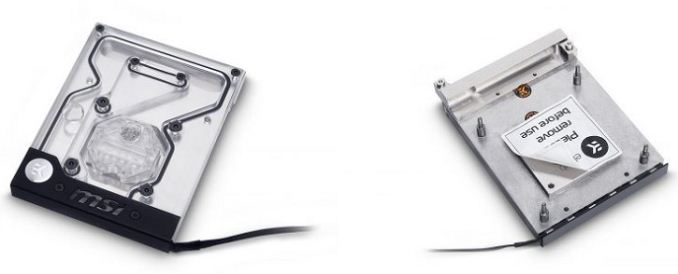
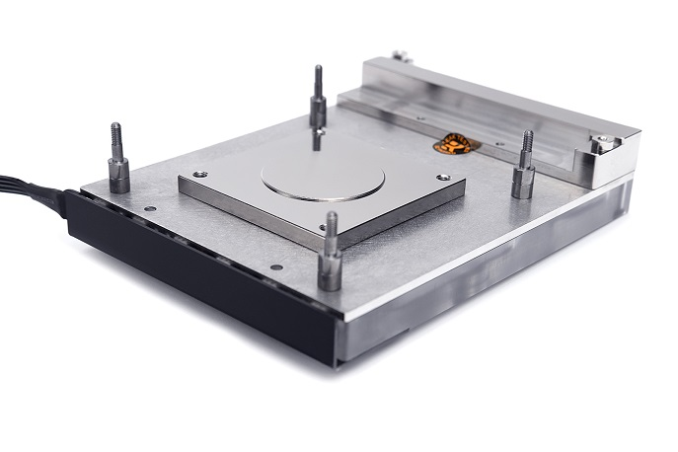
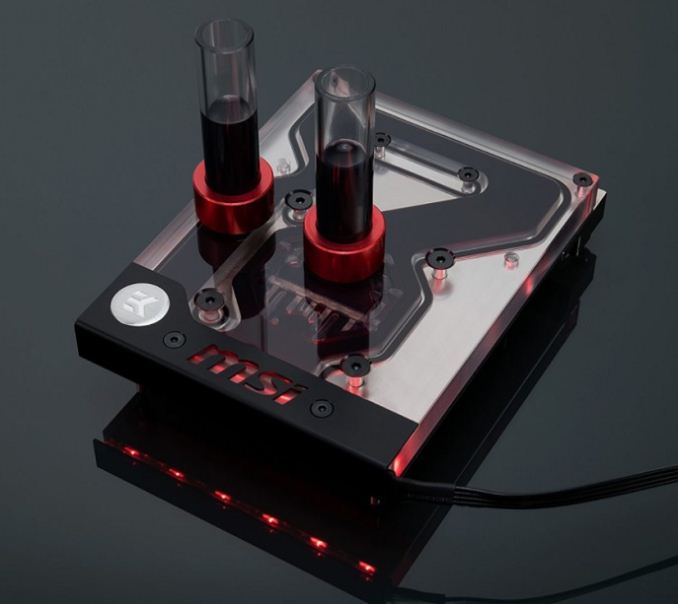
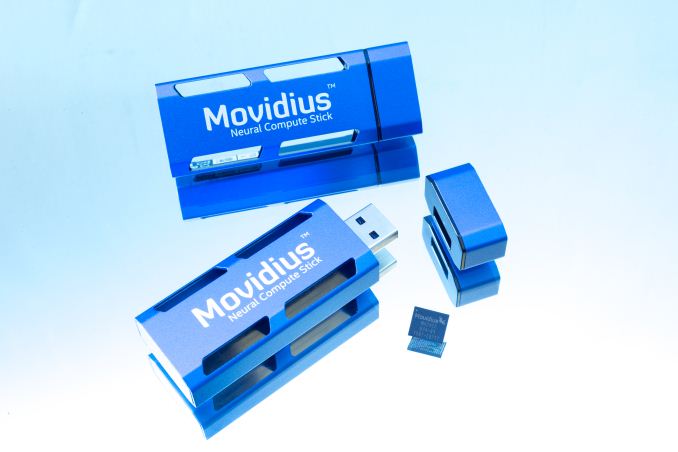
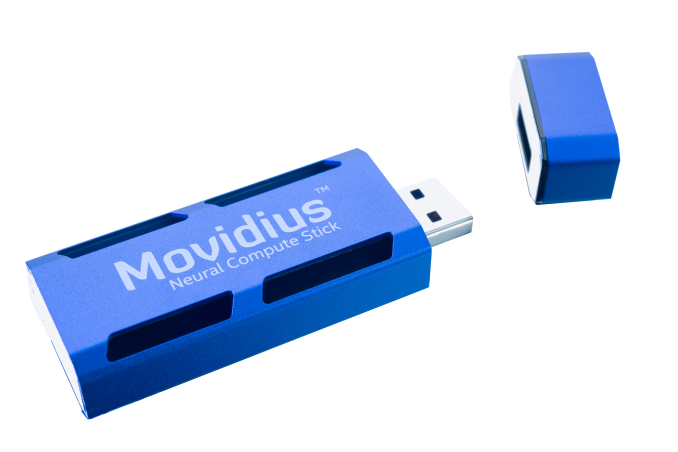

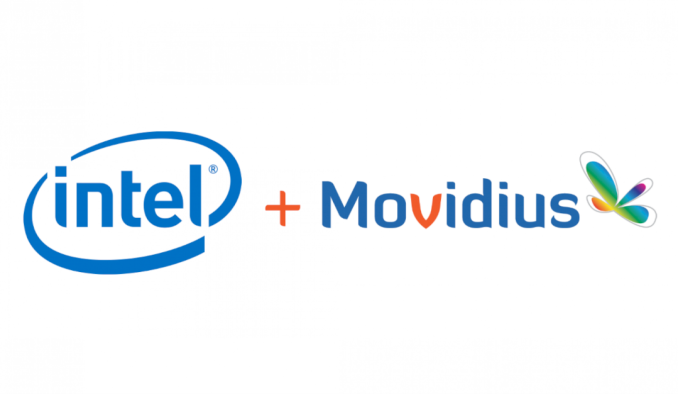


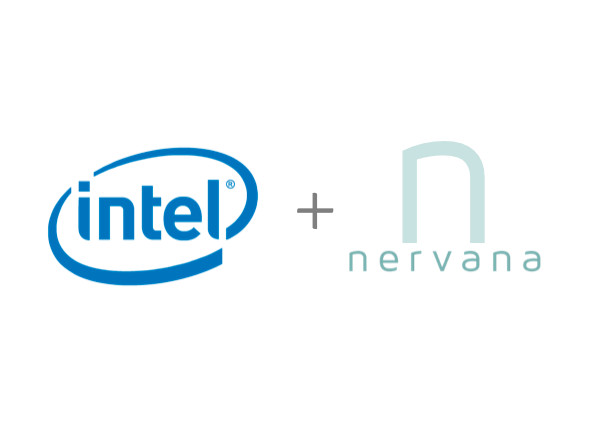
















Bookmarks